Make your next shopping trip simple with this handy vegan grocery list (available in a printable PDF). The trick to plant-based shopping is knowing what you need, versus what is available.
They aren't the same thing.

Jump to:
Downloadable PDF Vegan Food List
This vegan grocery list will get you started building up your vegan pantry and kitchen. You'll find two pages; one with a suggested list and a blank list for you to fill in.
Buy What You Need
These days supermarkets are brimming with plant-based ingredients, but that doesn't mean we have to go out and buy them all.
If you are new to vegan cooking, or a seasoned cook wanting to get more organised, this vegan grocery list and guide will help you navigate many of the ingredients available. Some you'll need, some...not so much.
It's a BIG guide but by no means exhaustive. First, let's begin with ingredients vegans can't eat.
Non-Vegan Ingredients Found in Common Foods
Besides the obvious meat, dairy and eggs, animal products can be found in everyday foods. Before we build our vegan food list, it's a good idea to get familiar with the animal products lurking on food labels. We'll talk about what you can eat in the next section.
Here are some commonly found animal-based ingredients.
So, what can Vegans Eat?
People tend to focus on what vegans can't eat, but there is so much that we can.
Honestly, don't sweat it. You are not going to go hungry.
Shopping for Nutrition
I am increasingly aware that eating the "right" foods can feel overwhelming. It's part of the reason I went back to school to study Nutrition. There is so much advice out there from less-than-expert sources. And those that are qualified, tend to focus on specific areas. It's a dietary jigsaw puzzle.
So, here's one thing I do know. As a vegan, you are going to need to eat more volume to get your daily nutrients. 100g of spinach looks different to 100g of red steak. No?
But, it's totally achievable. I have been vegan for many years, I run almost every day and I'm in my 40s. And I don't spend hours worrying about my diet. I keep it simple.
When planning your vegan grocery list, think about the following.
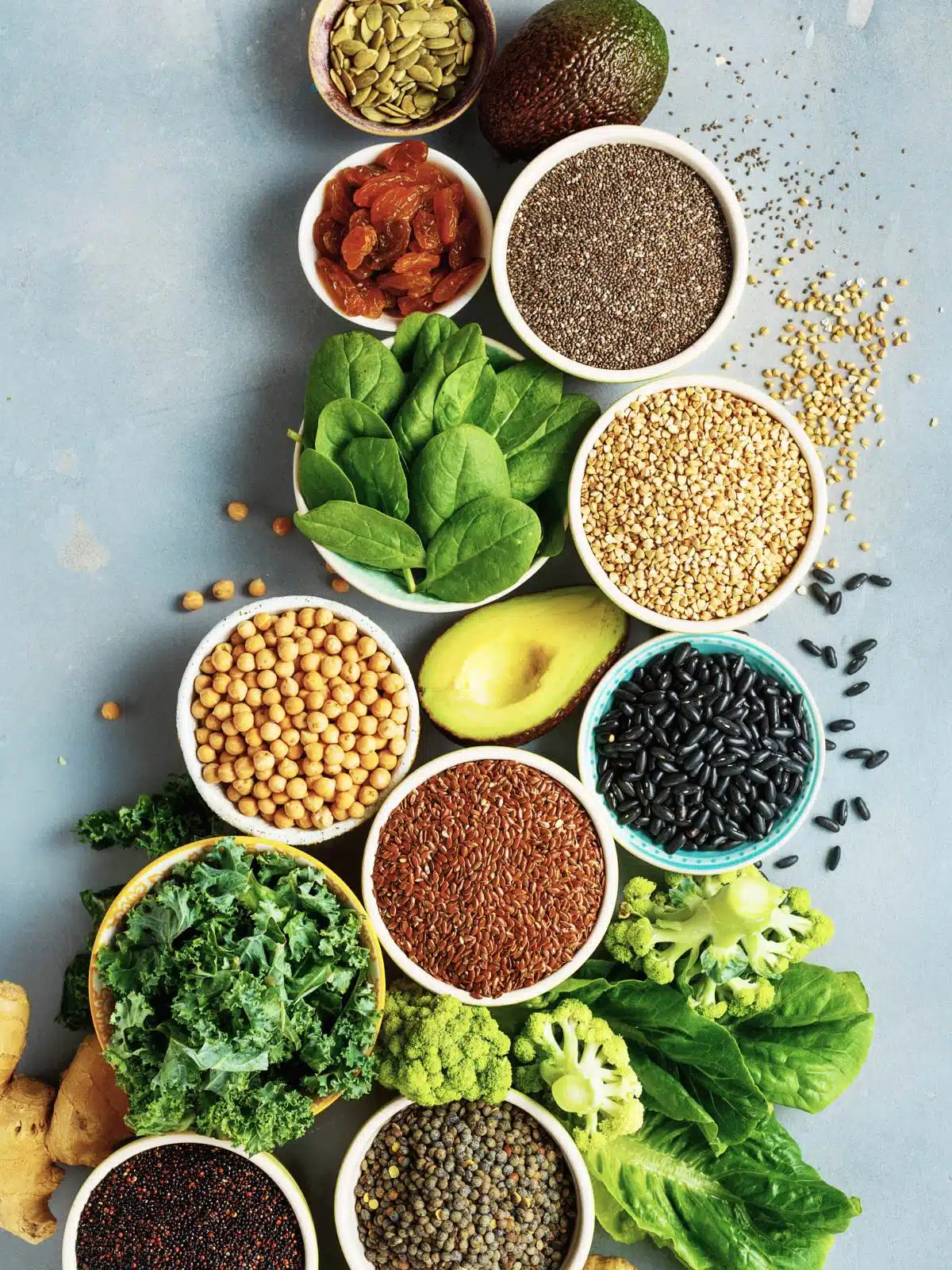
Leading gut health expert Professor Tim Spector recommends eating 30 different types of plants each week for improved gut health. That can include fruit, vegetables, spices, coffee, herbs and grains. If it's from a plant, it counts.
Your Vegan Grocery Guide
To create your vegan grocery list, I've first created a pantry guide. It's a larger list of vegan products available. Feel free to jump around and explore the ingredients that interest you.
The grocery list has all the things I always have in my kitchen. It's a good starting point for when you are ready to begin stocking a vegan pantry. You can add other ingredients as you go. Rome wasn't built in a day and neither is a vegan pantry.
Hold on to your spatulas, this is a long post but you can jump straight to ingredients that interest you here ↓
What's in a Vegan's Fridge?
Tofu
There is no denying tofu's versatility. Made from soybean curd, this protein rich ingredient can be used in both sweet and savoury recipes. Unless you are soy-free, tofu is a great addition to your vegan grocery list.
Soy is a complete protein meeting all the essential amino acid requirements.
Tofu is generally available in two forms; silken and firm although you can find medium tofu which sits somehwere in-between.
Firm tofu includes plain, smoked and flavoured varieties and is great for frying, crumbing and roasting. You can also use it to replicate vegan cheeses, like my tofu feta, and quiche.
Silken tofu, on the other hand, is lovely for vegan mousse and pudding recipes, in broth-style soups and as a replacement for eggs.
To avoid genetically-modified tofu, shop for non-GMO organic brands.
Dairy-free Milk
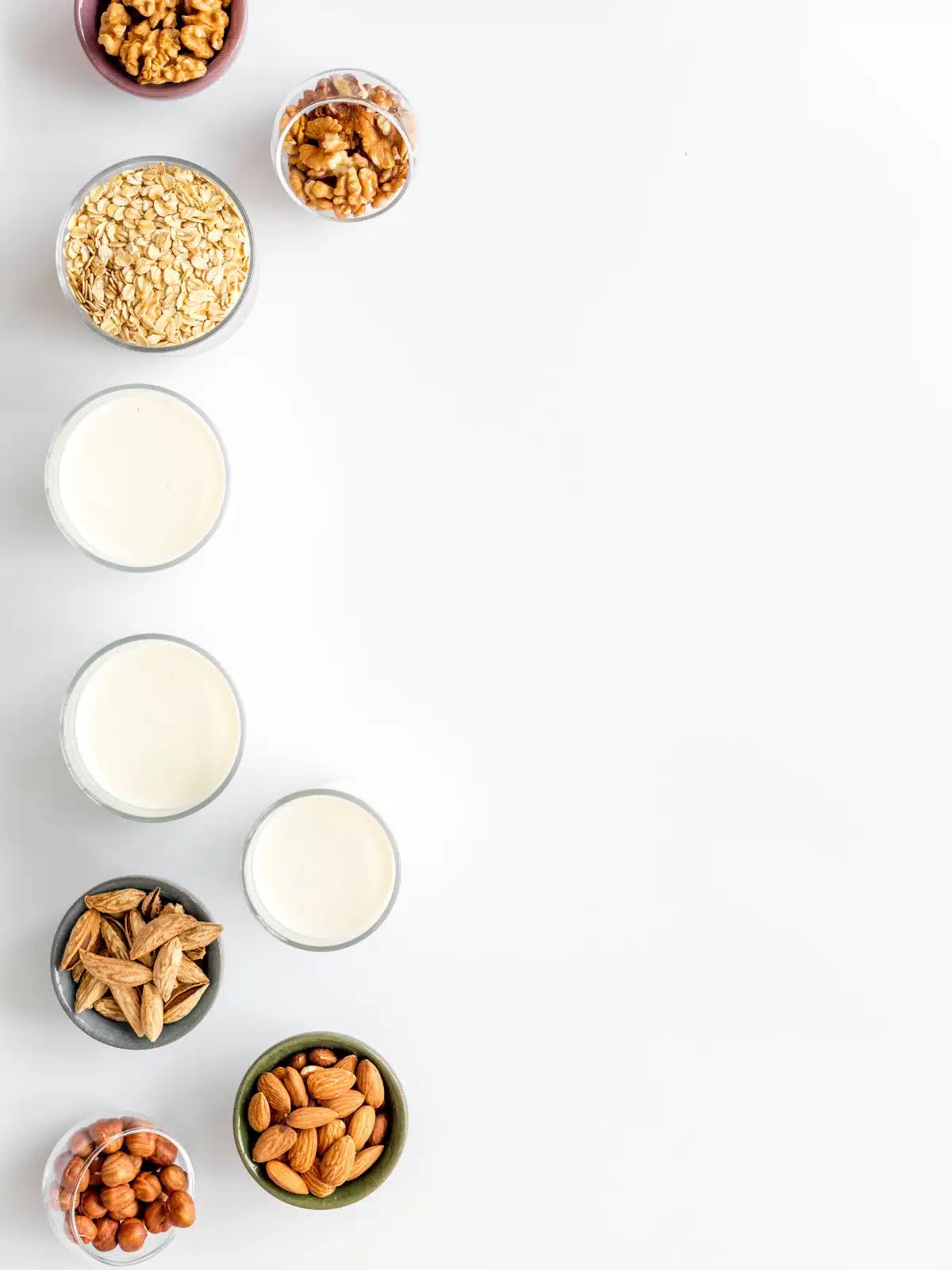
No vegan pantry is complete without some dairy-free milk. Soy, almond, rice, oat, macadamia, cashew, hemp...we are spoilt for choice in the milk department.
All of these milks can be bought easily enough at most supermarkets. Store them in the pantry until opened and then transfer them to the fridge.
Making your own is simple too. A quick Google search will have you sifting through hundreds of milk recipes in no time. I personally use mostly soy, homemade almond and oat milk.
Vegan Cheese
Cheese was one of the hardest things for me to give up when I changed to a vegan diet. It didn't help that I ate some pretty average vegan varieties before I found the ones I like. I am crushing on Miyoko's Kitchen, Follow Your Heart and The Alternative Dairy Company.
I am in Australia and we don't have NEAR the range other countries do...so if you're lucky enough to have a big range available, have fun and find your favourites. You can make your own too.
Yoghurt
Coconut yoghurt is probably the most widely recognised dairy-free yoghurt. It's thick, creamy and delicious. However, there's no getting away from that coconut flavour. My favourite yoghurt is a nut-based yoghurt made right here in Australia by Nakula. Soy and nut yoghurts are available in most supermarkets.
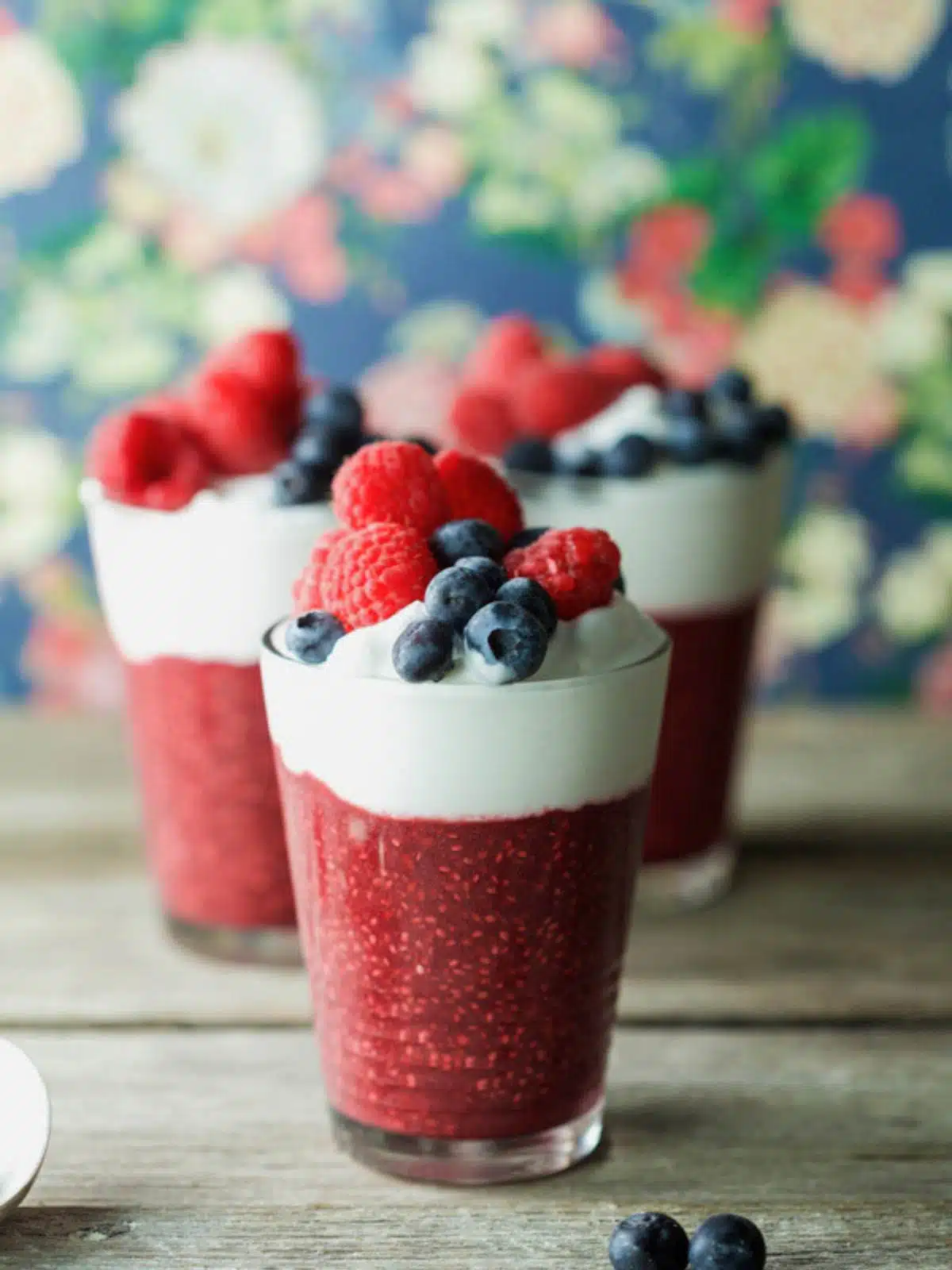
Miso Paste
Oh, miso paste. How I love you. I use miso paste not only in miso soup, but in pasta sauces, salad dressings, glazes and even caramel.
Miso paste is almost always made by fermenting soybeans with salt and koji and sometimes barley, rice and seaweed. The longer the fermentation process the darker the paste and the deeper the flavour. Miso is wonderfully savoury with oodles of umami flavour.
Tempeh
Tempeh is not for everyone but it is pretty versatile and being a fermented food, pretty darn good for you. Tempeh is made from whole soy beans (well, bits anyway) and wait for it...mould. But it's good mould. Rhizopus oligosporus. The soy beans and mould are bound together in a fermentation process resulting in a block that easily crumbles. Tempeh is great grilled, crumbled in chilli and ragu and fried up for sandwiches.
NB: unless the tempeh you buy specifically says it is pre-cooked ALWAYS cook your tempeh before eating it. Also, if your tempeh has gone mostly grey and sad, it's gone bad. Time for a new block.
Alissa from Connoisseurus Rex has the best all-round guide to tempeh I've read.
Mayonnaise
Egg-free mayonnaise is a must for creamy sandwiches and coleslaw-style salads. You can find it at most supermarkets. I make my own vegan mayonnaise and it is super simple and saves money.
Fruit & Vegetables
It goes without saying that fruit and vegetables play a BIG part in a vegan pantry. Buy the rainbow!
Cauliflower, broccoli, carrots, peas, beans, beetroot and others all live in the fridge as do many fruits.
While fresh is best, frozen fruit and vegetables work in a pinch and a good stockpile will have you in smoothies for weeks. I always have frozen edamame beans (technically a legume) in the freezer for snacks and adding to stir-fry.
Fermented Vegetables
My fridge is always stocked with kimchi and different types of sauerkraut. Besides being wonderful for your gut health - they are rich in probiotic bacteria - fermented foods are delicious on sandwiches, tossed through noodles or perched on avocado toast.
Vegan Meats
While I don't buy a lot of "mock meats" I admit I am a big fan of a Tofurky sandwich with homemade mustard and fresh tomato.
Supermarkets now stock an impressive range of vegan burgers, rissoles, "chicken" tenders and even plant-based fish. Yes, these products are processed and yes they contain a fair amount of salt, but then so do a lot of real meat products.
You can make your own "meats" to keep track of what goes into your food. You're going to need wheat gluten (gluten flour in Australia) and some beans to play with. Search the Internet and get experimenting.
I personally use shredded oyster mushrooms, young canned jackfruit and lentils as my meat-replacers more often than anything else. I am starting to experiment with homemade seitan.
What's in a Vegan's Pantry?
Pantry Legumes
Dried legumes are an inexpensive and versatile protein source. High in protein and fibre and low in fat, legumes are best cooked from scratch but cans are a quick and easy option too. There are tonnes of different varieties so I'll just mention a few here.
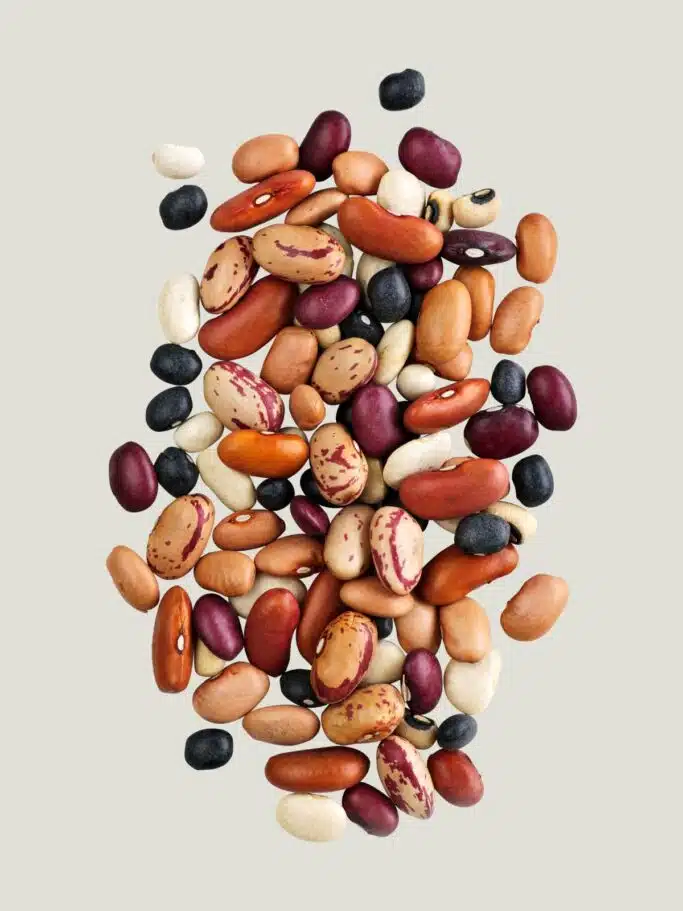
Rice, Pasta & Noodles
Like any kitchen, a good stockpile of different pastas and rice make pulling together a meal easy. I always have a shelf full of egg-free dried pastas with my favourites being fettuccini, bucatini, penne and rigatoni. I also use orzo because I love my lemon orzo and it's so quick to cook.
Lately we've been enjoying red lentil and buckwheat pasta too.
In the rice section I always have basmati, jasmine, sushi, brown and Arborio rice for risottos. I also love brown basmati but it can be a little harder to find. Buying rice in bulk and storing it in large jars is cost-effective if you have the space. If you don't you could split larger bags with friends to save some pennies.
I also have dried noodles on hand especially rice noodles and rice sheets (for fresh hand rolls), buckwheat noodles and soba noodles. You can also find pre-cooked udon and hokkien noodles that store in the pantry until opened.
Other Grains
Besides rice, I keep a good supply of grains in my pantry to mix things up and add more nutrients. I am including one of my favourite ingredients, buckwheat, even though it is technically a pseudocereal. Buckwheat is cooked like a grain and I use it more than any other. Besides being delicious, it is super cheap, crazy versatile and gluten-free.
*indicated the grains I use most often
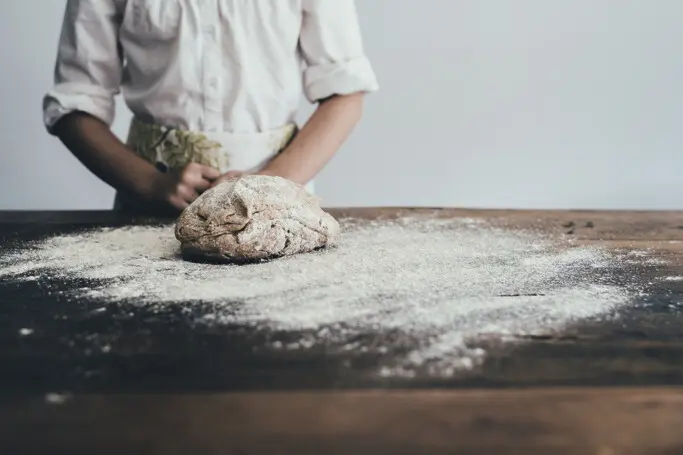
Flours & Starches
Like "traditional" kitchens, flour is a staple in a vegan kitchen.
I love to bake and keep a variety of flours in the pantry and fridge. Starches are great for thickening sauces, ice-cream bases and making gluten-free flour mixes.
If you don't use flour much, you can store it in the fridge in a sealed container or even in the freezer to extend its shelf life.
* indicates the flour I use most often and always keep in the pantry
Sauces and Stocks
Add a selection of sauces to your vegan grocery list. A good sauce can make a pretty good meal a great one. I always have the following sauces in my arsenal. Some I pop in the fridge after opening but they begin in the pantry.
*indicated the sauces I always have in the kitchen
Oils
You could go mad buying all the different oils on the market and for a while there I did. These days I stick to a few basics - the ones listed below with a *. These are the oils I use almost every day. I'll add some others to the bottom of the list but I really only have or use them when I'm feeling fancy.
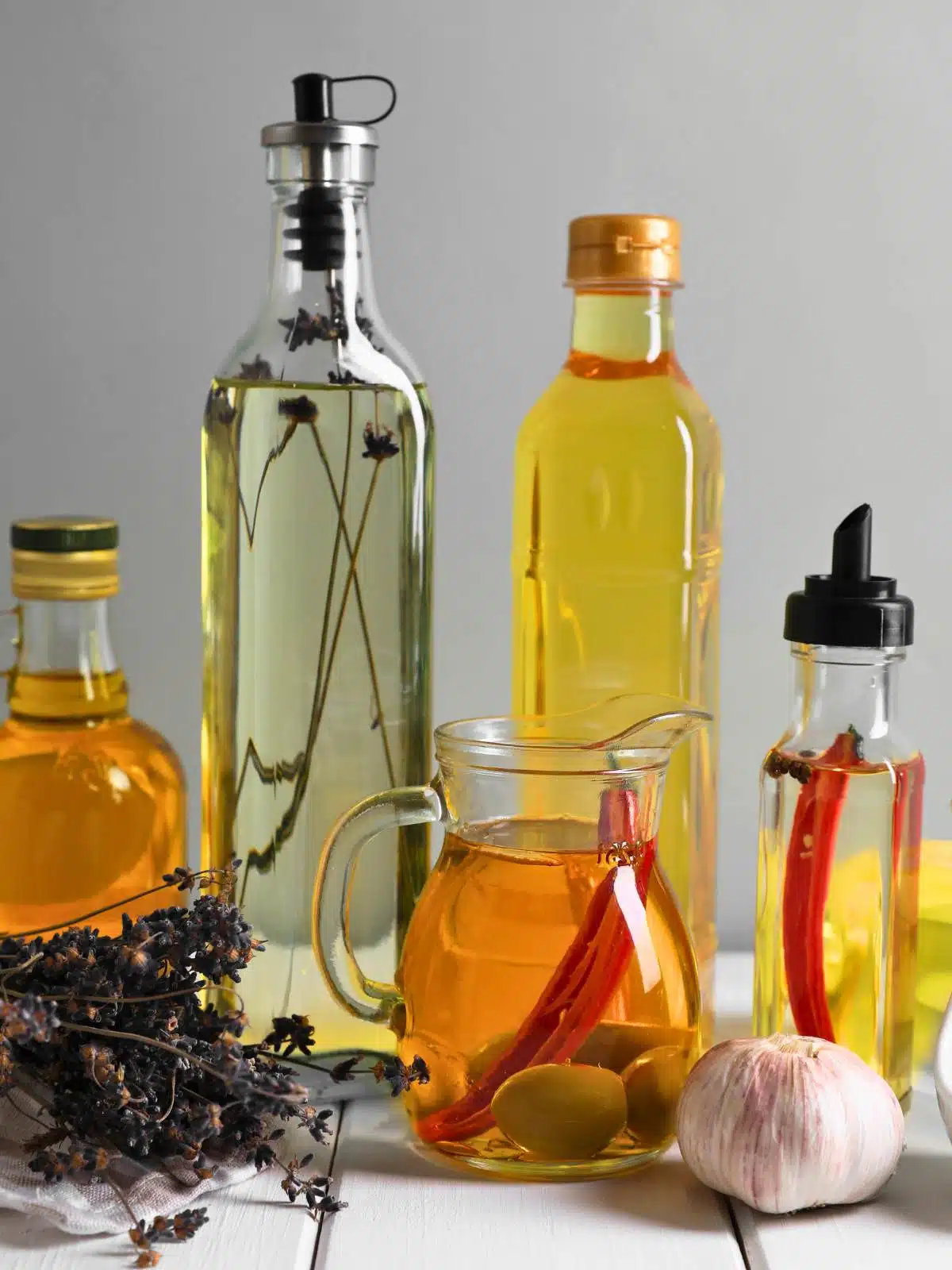
* indicates the oils I use most often
Vinegars
Vinegar adds acidity to recipes and creates balance in meals that would otherwise be rich or heavy.
I use apple cider vinegar more than any other which is great because it is also the healthiest. Other vinegars I keep in the pantry include rice wine vinegar for Asian recipes, white wine vinegar, red wine vinegar, malt vinegar and balsamic vinegar. If I'm feeling a bit fancy I'll pick up a bottle of raspberry vinegar for salad dressing.
If I had to choose I would buy apple cider vinegar and maybe a white wine vinegar. Lemon juice will add acidity to recipes too.
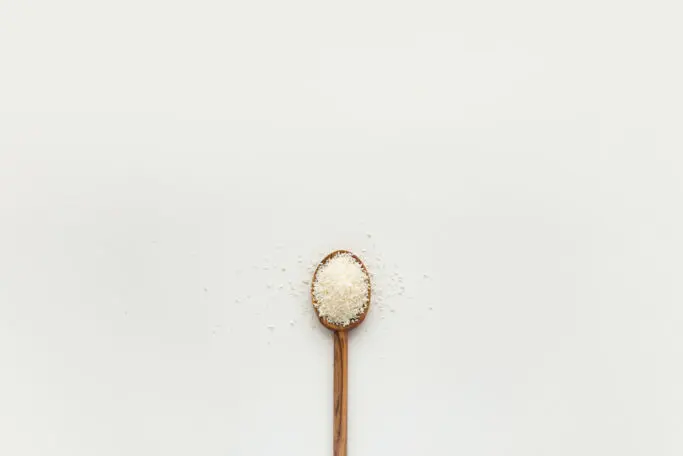
Salts
I am a little addicted to salt so I have quite a few varieties including sea salt (both Malden flakes and fine salt) local pink salt, Kosher salt and smoked salt.
You don't have to get all of these but a good salt will enhance your food. Salt equals flavour. Start out with a good sea salt and go from there.
Nutritional Yeast
Nutritional yeast or "nooch" is an inactive yeast that grows on beet molasses and sugar cane. After processing we are left with golden flakes that are wonderfully savoury and a little cheesy. Skyrocket those flavours by lightly toasting the flakes on a dry pan and adding a touch of salt. So good! Nutritional yeast can be found at most supermarkets these days and wholefood stores. I use nooch every day. Buy it in bulk and store in a sealed container away from light or you can store it in the fridge.
Kala Namak
Kala Namak or Indian Black Salt is a salt with naturally occurring sulfur. It is super eggy!
Found in Indian markets and some wholefood stores this finely ground salt packs a punch. It is perfect on scrambled tofu or in dishes where you are trying to create an egg-like vibe such as quiche.
Kombu & Other Seaweeds
While kombu isn't essential to stock a vegan pantry, it's pretty fantastic. Kombu is an edible kelp that makes things taste DELICIOUS. It has a high level of glutamic acid - an amino acid that provides a savoury, umami hit. Kombu is purchased in large sheets and a small amount is used to season broths and beans. Kombu is also thought to help break down the carbohydrates in beans making them easier to digest.
Besides kombu, I always keep seaweed sheets in the house so we can whip up a simple sushi dinner or a quick miso soup.
Eating seaweed and sea vegetables is a great way for vegans to get iodine in to our diet.
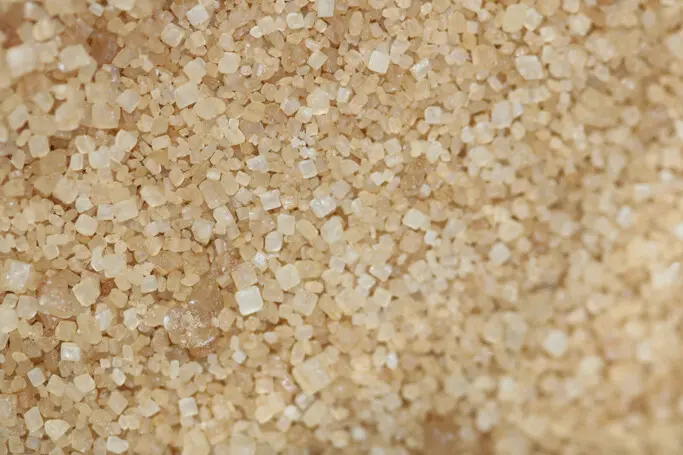
Sweeteners
I avoid white sugar (except when I'm using confectioner's sugar). It isn't that I'm super healthy, I just think some things are supposed to be brown. Sugar is one of them. I use maple syrup and raw caster sugar more than any other sweetener. Occasionally I'll play with my food and use the others below.
Brown sugar
Raw caster sugar*
Maple syrup*
Coconut nectar and sugar: Coconut nectar isn't coconut-y and is less sweet than maple syrup. It has a slight caramel flavour and can be substituted for brown or cane sugar.
Brown rice syrup. Also less sweet than maple syrup, brown rice syrup becomes more solid and has a crunchy texture when heated while maple syrup remains sticky.
Stevia. A herb that doesn’t contain any sugar at all and doesn't affect on your blood sugar. I buy liquid stevia, which is a combination of water and powdered stevia. You only need a couple of drops to sweeten your smoothies, ice creams, desserts or coffee. Some people find it has a slightly bitter aftertaste.
Dates. If you can get Medjool dates; they are naturally soft and large. If you can't, simply soak snack dates in boiling water for 10 minutes after pitting before use.
Banana purée and applesauce. I use banana and applesauce as egg replacers in baking and also as a natural sweetener.
Nuts & Seeds
Nuts and seeds are a great source of good fats and protein. They are also super versatile and form the basis of many delicious foods like cashew cheesecake, nut butters, tahini, nut milks and cheeses. Or you can simply toss them over salads or your breakfast yoghurt with fruit.
Having a decent range in your kitchen means you have access to a tonne of delicious recipes. Having said that, nuts can be expensive so I buy from the bulk bins and keep an eye out for specials.
I store almonds, cashews, pecans, walnuts, hemp seeds, chia seeds, pepitas and sunflower seeds in sealed jars in the refrigerator. This keeps them fresher for longer. This is a great idea if you buy a nut or seed but don't plant on using it too often. If it stays in the back of your pantry it will spoil before you you it next time.
I won't give you an exhaustive list of all the nuts and seeds available but these are my favourites and ones I keep in the kitchen. When I can afford them, that is!
- raw almonds*
- cashews*
- Brazil nuts (for selenium")*
- hemp seeds (a great source of protein and omega-3 fatty acids - I use these daily over everything)*
- flax seeds
- pepitas*
- sunflower seeds*
- chia seeds*
- sesame seeds
- pecans (I prefer pecans to walnuts but that's just my preference)
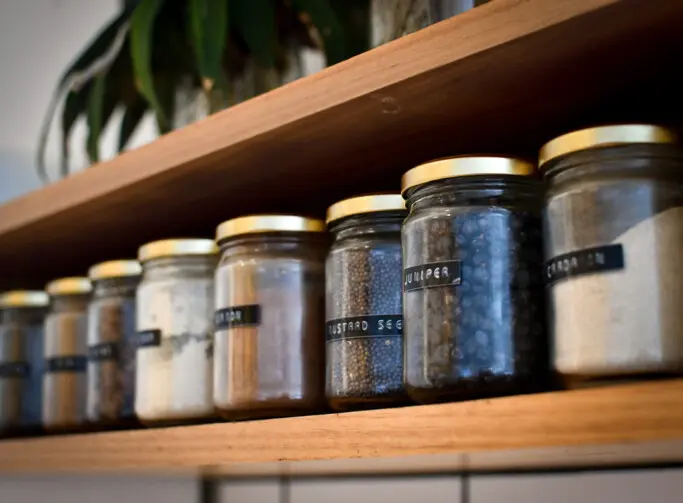
Herbs & Spices
If you're going to stock a vegan pantry, you're going to need herbs and spices.
But, how many herbs and spices do you need? Well, how long is a piece of string? To bring flavour you need to season and the seasoning you use - other than salt and pepper - depends on your taste.
I have built up a good pantry of spices - some I keep in the fridge to keep them fresh - but there are a few use I use almost daily and stay within reach. Building a spice cabinet can be expensive, so start with a few, and go from there.
I also grow potted herbs as much as I can to avoid constantly buying fresh ones.
*indicates the spices I use most often
My Favourite Vegan Ingredients
A Starter Shopping Guide to Stock a Vegan Pantry
Using this list of basics you can make a HEAP of different meals including my chickpea and spinach curry, my vegan "chicken" noodle soup and almond butter maple granola. You can even whip up a batch of vegan pancakes or a simple avocado and kimchi on toast. Think of this list as your first shop. Over time you'll add more seeds, grains and different spices but this is a good start.
So, that's pretty much it. My guide to stocking a vegan pantry and creating a vegan food list.
While, there's a tonne of information here, at the end of the day, there is no hard and fast rule on how to stock a vegan pantry.
You may love Asian flavours and want to begin exploring those ingredients first. Awesome! The good news is that a lot of things on this list you probably already have in your kitchen. Now it's just about adding bits and bobs to make sure you are getting all the vitamins and minerals you need.


Comments
No Comments